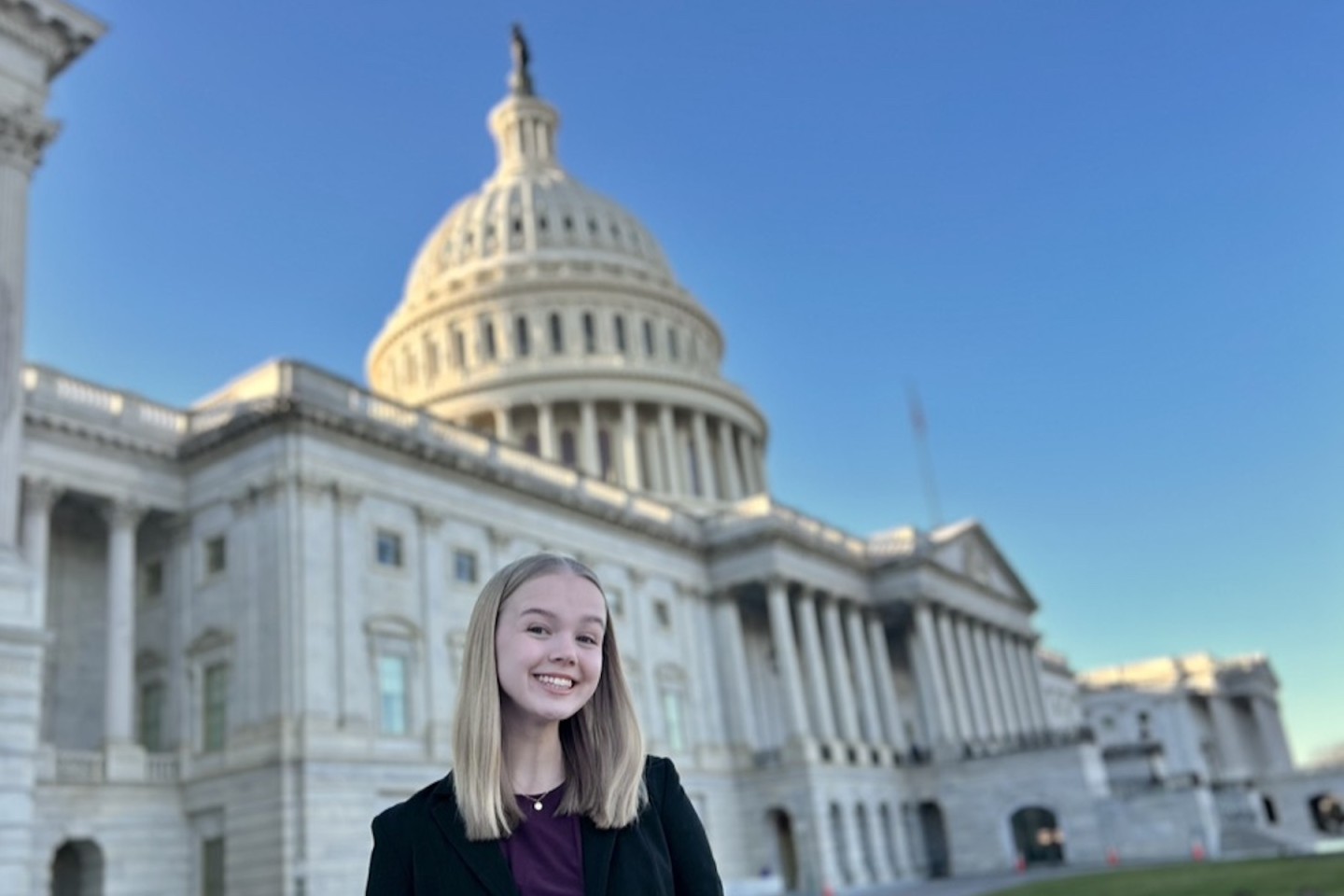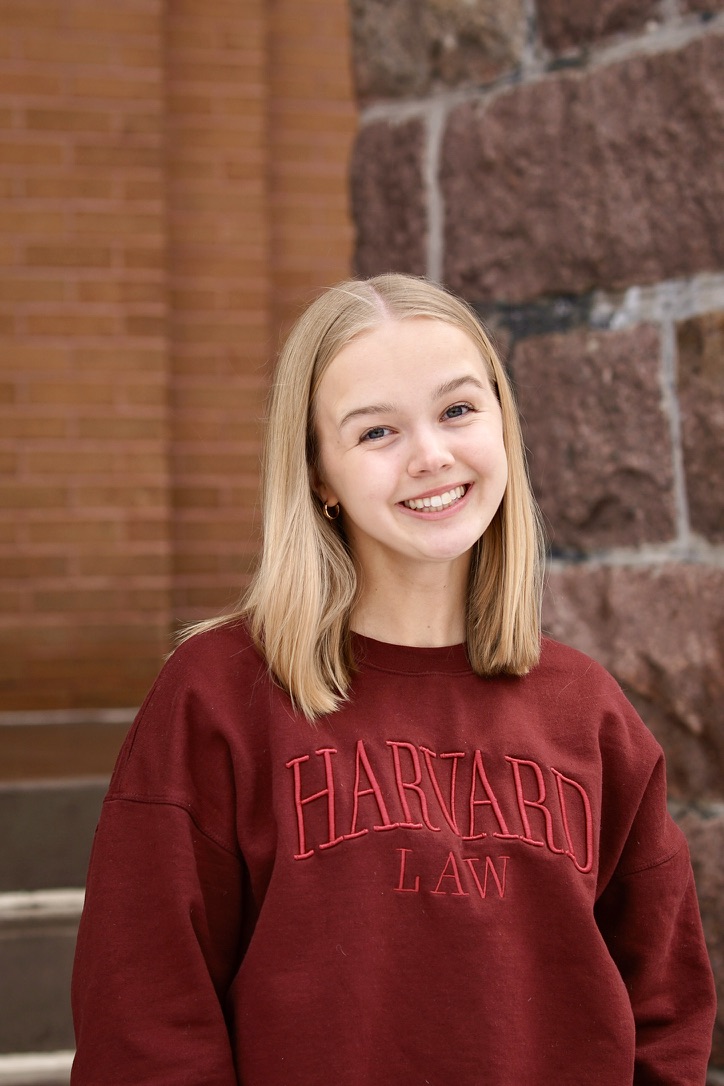
Entire books have been written about how to get into , but Grace Halvorson ’25 didn’t consider it until a professor asked her why not.
“I hadn’t even thought that this would be something that was realistic for me, coming from small town Moorhead, Minnesota, coming from ×ö°®ÊÓƵ,” she said. “But I think the message there is that Concordia does set students up to really reach to the highest heights and be successful on those levels.”
Halvorson, a political science and philosophy major, begins her studies at in the fall, and hopes to eventually work in public interest litigation, ideally in the courtroom. She’s already spent years working toward that goal, confident that law will allow her to combine the skills she earned through competitive speech, the education and experiences she gained through Concordia, and her own passions and interests.

“The cool part about the journey toward law school is that everybody’s looks different, and admissions offices want to see applicants from a wide variety of different backgrounds,” she said. “So for me, everything was preparing me for law school.”
As a multifaceted profession with dozens of specializations, from contract law to family law, criminal law, or patent law, all kinds of educational backgrounds are potentially useful for prospective lawyers. As such, the does not recommend any specific undergraduate majors as preparation for a legal education.
Accordingly, Concordia offers a pre-law minor rather than a major, allowing students to get an early taste of what the legal profession might look like for them while encouraging them to pursue their own interests too — while they build critical thinking, writing, research, problem-solving, and presentation skills.
“I think sometimes there’s a misconception that you have to do mock trial and Pre-Law Society, and then that’s it, you’ll be ready for law school,” said Halvorson, noting that her best preparation actually came from meeting a variety of people, taking a variety of classes from a variety of professors, and gaining a variety of experiences at Concordia.
Then there’s the , better known as the LSAT, the beefy standardized test designed to measure skills essential for success in the legal profession — and whose results are used as part of the law school admission process.
The LSAT currently includes four 35-minute sections of multiple choice questions, as well as a writing section, all meant to assess “the ability to think critically, analyze and evaluate the reasoning and arguments of others, and read complex texts with understanding and insight,” according to its creators, the Law School ×ö°®ÊÓƵ Council.
Generally speaking, students should study for around 300 hours before taking the . This can be done a variety of ways according to Halvorson and Dr. Nicholas Howard, pre-law advisor and assistant professor of political science at Concordia.
Some students study more intensively over a three-month period before the exam, while others — like Halvorson — study for about an hour and a half daily over a seven-month period.
“Honestly, I went in feeling really prepared, and I left feeling like I absolutely bombed it, and then my score was good,” said Halvorson, who took the test in January 2024.
It was excellent, and along with her GPA, prompted several law schools to waive their application fees for Halvorson. As such, she applied to nine schools, focusing on the most competitive ones to improve her shot at doing public interest litigation in the future.
 Beyond the and transcripts, law schools also typically require letters of recommendation and a personal statement from the applicant, as well as a detailed self-volunteered background check that will be verified by the state bar when a candidate applies for admission. Accuracy on that check is crucial, Howard said, as it’s not likely to be disqualifying — but omissions could be.
Beyond the and transcripts, law schools also typically require letters of recommendation and a personal statement from the applicant, as well as a detailed self-volunteered background check that will be verified by the state bar when a candidate applies for admission. Accuracy on that check is crucial, Howard said, as it’s not likely to be disqualifying — but omissions could be.
The academic references most often come from faculty members, Howard said. But recommendations can also include relevant professional contacts, if a student has done work at a law firm or prosecutor’s office. Law schools are primarily interested in two things: one, does an applicant understand what law school is and truly want to attend? And the other, can the applicant succeed there?
“The last one that is pretty universal is a personal statement, and the structure of a personal statement varies widely from law school to law school,” Howard said. “It is not a one-size-fits-all enterprise … they will ask for very specific things.”
Some want applicants to briefly answer a single direct question; others will ask for general, multiple-page statements, and Howard encouraged applicants to read about what each school is asking for very carefully, tuning the response to that school.
“Being able to tell your story in a way that makes it very clear why the law is the right choice for you really makes the difference, I think,” Halvorson said. “I don’t think law schools are looking for people who are going to law school because it sounds like a decent option, or they don’t really know what else to do.”
Telling your story compellingly means showing that you’ve thought about what it would mean to join the legal profession, and that means showing you’ve done the internships, job shadowing, volunteering, and community engagement work to see how law can play out in the world, Halvorson explained.
“I was already able to say ‘Look at all these different things that I will be bringing to the table when I think about the law,’” she said.
Many other students arrive at college hoping to go to law school but lacking a detailed road map to help them get there.
“I meet with both prospective students and current students all the time, so I’m happy to talk about, for prospective students, what it looks like, and for current students, how they can get involved,” Howard said. “Just come and talk to me.”
A number of other Cobbers have earned graduate degrees from Harvard, including at least one Juris Doctor, Kevin Reuther ’88. In addition, Asmah Tareen ’96 attended for a negotiation program after she had already earned her law degree.